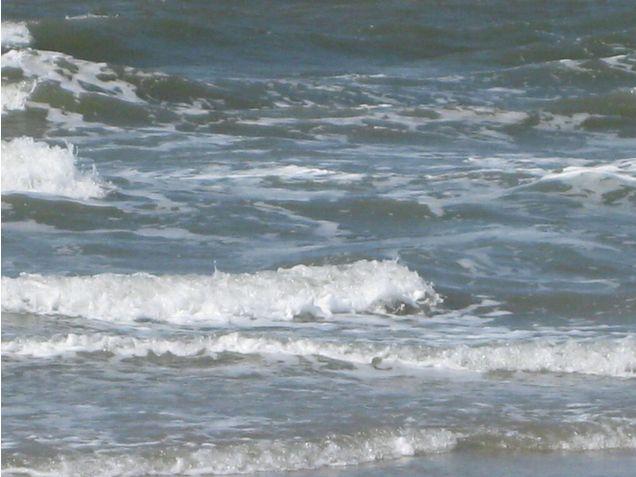Picture this: you’re swimming off the coast of Folly Beach on a perfect sunny day. The waves are rolling in, the seagulls are calling overhead, and everything feels calm and beautiful. Then, suddenly, you notice you’re not getting any closer to shore. In fact, you’re drifting farther out — fast. No matter how hard you swim, you can’t seem to make progress. Panic sets in, until you remember something you once heard: this might be a rip current.
Rip currents are powerful, fast-moving channels of water that flow away from the shore. They can move faster than an Olympic swimmer — sometimes reaching speeds of up to eight feet per second — and they are responsible for more than 100 drowning deaths each year in the United States. These currents are one of the most common and dangerous natural hazards at beaches, including right here on Folly.
Rip currents form when waves break strongly in some locations and weakly in others, creating a narrow flow of water that pulls directly away from the beach. They’re most common near sandbars, piers, or breaks in the shoreline, but they can form anywhere along the coast. Contrary to popular belief, rip currents don’t just happen during storms — they can develop on even the calmest, sunniest days.
If you ever find yourself caught in one, the most important thing is not to panic. Don’t try to fight the current or swim straight toward the shore — that will only exhaust you. Instead, swim parallel to the beach until you’re free of the current’s grip, and then angle back toward shore at a diagonal. If you can’t escape by swimming, try to float or tread water calmly until help arrives or the current naturally releases you.
If you see someone else caught in a rip current, do not attempt to swim out to rescue them. Even strong swimmers can be pulled in quickly. Instead, call 911 or alert a lifeguard immediately. Shout instructions to help them stay calm and encourage them to swim parallel to shore. Remember — saving a life begins with keeping yourself safe too.
Here are a few important facts every beachgoer should know before heading out:
Rip currents can move at speeds of up to eight feet per second, faster than the strongest competitive swimmers.
More than 100 people die every year in rip-current related incidents across the U.S.
Lifeguards rescue thousands of swimmers from rip currents annually.
A rip current is not the same as a rip tide — tides involve the movement of water through inlets or estuaries, not directly away from the shore.
Rip currents are most likely to occur near sandbars, piers, or other breaks in the underwater landscape.
Many are narrow and short-lived, but some can stretch for hundreds of feet. Staying calm is key to survival.
When swimming at Folly Beach, always check for lifeguard flags and weather advisories, especially when storms or high surf are expected. Before heading out, it’s smart to review the latest Folly Beach tide chart and surf conditions. Knowing what to expect from the water is one of the best ways to enjoy a safe day at the beach.
Folly Beach is a beautiful place to swim, surf, and explore — just remember to respect the ocean’s power. Understanding how rip currents work, and how to react if you encounter one, can make all the difference. Stay alert, swim near lifeguards, and always keep safety first on the Edge of America.













